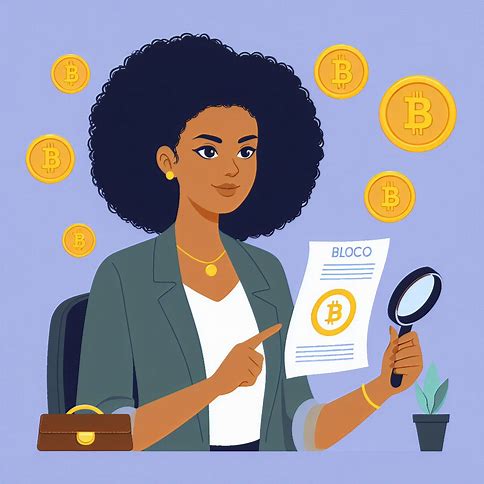Do you really need days, months or years to learn crypto trading?
As someone who’s been trading crypto for years, I can tell you that the answer isn’t as simple as “watch a few YouTube videos and you’re good to go.” Learning to trade effectively takes time, effort, and a whole lot of patience.
Because here’s the thing – crypto trading is not a get-rich-quick scheme. It is a serious skill that requires ongoing learning and adaptation. But if you’re willing to put in the work, it can be a very rewarding way to grow your crypto portfolio and achieve your financial goals.
Key Areas to Master in Crypto Trading
To become a successful crypto trader, there are several key areas you’ll need to develop your knowledge and skills in:
1. Understanding the fundamentals of cryptocurrency and blockchain technology:
You don’t need to be a coding expert, but you should have a solid grasp of how cryptocurrencies work, the key differences between coins and tokens, and the basics of blockchain technology like decentralization, mining, and consensus mechanisms.
2. Learning technical analysis (TA) to read price charts and identify trading opportunities:
TA involves studying historical price data to spot trends, patterns, and potential entry and exit points. Key concepts to learn include support and resistance levels, moving averages, candlestick patterns, and common chart formations like head and shoulders or cup and handle.
3. Developing a trading strategy that fits your goals, risk tolerance, and lifestyle:
There are many different approaches to trading crypto, from short-term scalping to long-term holding (HODLing). You’ll need to experiment with different strategies to find what works for you, and then create a clear plan with defined entry, exit, and risk management rules.
4. Mastering your emotions and practicing discipline:
Trading can be an emotional roller coaster, with euphoric highs and crushing lows. To succeed long-term, you’ll need to learn to control your fear and greed impulses, stick to your plan even when the market moves against you, and avoid common pitfalls like revenge trading or “fear of missing out” buying.
5. Staying up to date with crypto news and market developments:
The crypto space moves incredibly fast, with new projects, regulatory changes, and market-moving events happening all the time. To make informed trading decisions, you’ll need to keep your finger on the pulse of the industry and be prepared to adapt your strategy as conditions change.
Read also: 5 Types Of Crypto Wallets
Mastering these areas takes time and practice. You’re likely to make mistakes along the way – I certainly did when I was starting out. The key is to keep learning from your successes and failures, and to view your trading education as an ongoing journey rather than a destination.
Common Pitfalls for New Crypto Traders
In addition to learning what to do, it’s just as important to be aware of the common traps that new crypto traders often fall into:
1. Not doing your own research (DYOR):
It can be tempting to just follow the advice of so-called experts or jump on the latest hype train without verifying the information for yourself. But in the crypto World, scams and bad advice abound. Always DYOR on any coin or trading strategy before risking your capital.
2. Trading based on emotion rather than logic:
Fear of missing out (FOMO), fear, uncertainty, and doubt (FUD), and the temptation to “revenge trade” after a loss can all lead to impulsive, irrational trading decisions. Stick to your plan and only trade when your predetermined criteria are met, not based on your emotions in the moment.
3. Using excessive leverage:
Many crypto exchanges offer leverage trading, allowing you to trade with borrowed funds to amplify your potential gains (and losses). While leverage can be a powerful tool for experienced traders, it also magnifies your risk. As a beginner, it’s best to avoid leverage until you have a proven track record of profitable trading.
4. Not using proper risk management:
Rule number one of crypto trading: never risk more than you can afford to lose. Use stop-loss orders to limit your downside, size your positions appropriately for your account balance, and diversify your holdings to spread out risk. A good guideline is to risk no more than 1-2% of your account on any single trade.
5. Chasing pumps and buying tops:
It can be tempting to buy a coin that’s skyrocketing in price, for fear of missing out on further gains. But often, by the time you hear about a pump, the smart money has already taken profits and the price is due for a correction. Chasing green candles is a surefire way to get caught holding the bag.
By being aware of these common mistakes, you can avoid a lot of unnecessary losses and headaches as you’re learning to trade. But even the best traders still slip up sometimes – the key is to learn from your missteps and keep refining your approach.
Timeline for Learning Crypto Trading
So, how long does it actually take to go from crypto newbie to confident trader? The truth is, there’s no one-size-fits-all answer. Everyone learns at their own pace and has different goals and circumstances.
But here’s a rough timeline of what you can expect based on my experience and observations:
– The first few days to a week: This is the “drinking from the firehose” phase where you’re bombarded with new concepts, jargon, and information. Focus on learning the basics of how cryptocurrency and trading work, setting up accounts on reputable exchanges, and familiarizing yourself with charting and trading tools.
– The first few weeks to a month: Start developing your market analysis skills by studying price charts, learning key TA concepts, and testing out different indicators. Begin formulating a trading strategy based on your goals and risk tolerance, and practice executing trades with small position sizes.
– The first few months: Continue refining your strategy, learning from your wins and losses, and building your discipline and emotional control. Start adding fundamental analysis (FA) alongside your TA to get a more holistic view of market drivers. Expand your market coverage to include a diversified range of coins and trading pairs.
– The first 6 months to a year: By this point, you should have a solid foundation of trading knowledge and experience. You’ll likely have gone through a few market cycles and experienced the highs and lows of volatile price swings. Keep refining your edge, optimizing your risk management, and adapting to changing market conditions.
– One year and above: Congratulations, you’re now an experienced crypto trader! But the learning doesn’t stop here. Keep studying, keep practicing, and keep evolving your approach. The markets are always changing, and the most successful traders are those who never stop learning and adapting.
The key is to approach your trading education as a marathon, not a sprint. Consistent, incremental progress over time is what ultimately leads to success.
Tips for Accelerating Your Crypto Trading Learning Curve
While there are no shortcuts to becoming a skilled trader, there are a few things you can do to speed up your learning and improve your chances of success:
1. Learn from those who’ve come before you. Study the strategies and insights of successful crypto traders, whether through books, online courses, or social media. But always think critically and adapt their wisdom to your own style and circumstances.
2. Join a community of like-minded traders. Surround yourself with people who are on the same journey of learning and growth. Engage in discussions, share ideas, and learn from each other’s successes and failures. Just be wary of groupthink and always make your own decisions.
3. Keep a trading journal. Record your trades, including your rationale, execution, and outcomes. Regularly review your journal to identify patterns, learn from your mistakes, and refine your strategy over time.
4. Practice with small stakes before scaling up. When you’re first starting out, trade with small amounts that you’re comfortable losing. As you gain confidence and consistency, gradually increase your position sizes in line with your growing account balance and risk tolerance.
5. Prioritize ongoing education and skill development. The markets are always evolving, and so must your knowledge and abilities. Set aside regular time for studying, whether it’s keeping up with crypto news, learning a new analytical technique, or practicing a new trading strategy.
So, how many days does it take to learn crypto trading? The short answer is: as many as it takes for you to develop a profitable edge in the markets. Focus on the journey of continuous growth and improvement, and the results will follow.
Frequently asked questions
1. Do I need a background in finance or trading to learn crypto trading?
No, you don’t need any specific background to start learning crypto trading. Many successful traders come from diverse fields and backgrounds. However, a willingness to learn, a logical mindset, and a disciplined approach are important qualities for any aspiring trader.
2. How much money do I need to start trading crypto?
You can start trading crypto with any amount that you’re comfortable with. Many exchanges have low minimum deposit requirements. However, it’s important to only trade with money you can afford to lose, especially when you’re first starting out. As a beginner, focus on learning with small stakes before gradually scaling up.
3. What are some good resources for learning crypto trading?
There are many great resources available, both free and paid. Some popular options include online courses on platforms like Udemy or Coursera, educational content from exchanges like Binance Academy, trading books like “Technical Analysis of the Financial Markets” by John J. Murphy, and YouTube channels from knowledgeable traders. Just be sure to vet the credibility of any resource and never follow trading advice blindly.
4. How many hours per day should I dedicate to learning crypto trading?
The amount of time you dedicate is up to you and your schedule. Even setting aside an hour or two per day for focused learning can add up over time. Consistency is key – it’s better to study a little each day than to have long but irregular sessions. As you gain experience, you may find that you spend more time on actual trading and analysis than on structured learning.
5. How do I know when I’m ready to start trading with real money?
A good sign is when you’ve developed a clear trading strategy and have tested it out successfully in a demo or paper trading account. You should have a solid understanding of risk management principles and be able to control your emotions while trading. Start with small, comfortable position sizes and scale up gradually as you gain confidence and consistency.
6. What if I lose money when I start trading for real?
Losses are a normal part of trading, especially when you’re starting out. No trader wins every trade. The key is to manage your risk so that no single loss is devastating to your account, and to learn from each loss to refine your strategy. If you find yourself on a losing streak, take a step back to reassess and make adjustments rather than trying to force trades to recoup losses.










